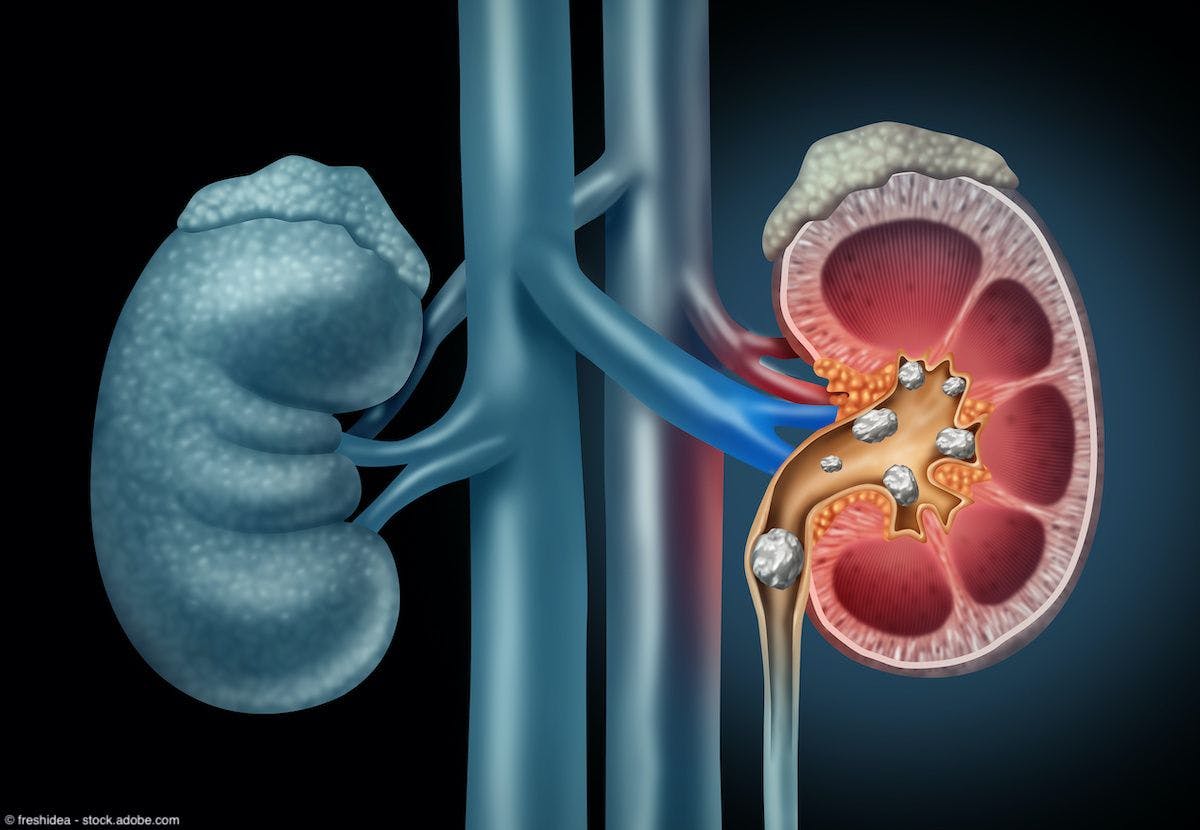Commentary
Article
Urology Times Journal
fPSA: A valuable, inexpensive, and underutilized prostate cancer marker
Author(s):
"FPSA is an important, inexpensive, and readily available test in our risk-stratification toolbox," writes Badar M. Mian, MD.
Badar M. Mian, MD

Despite its considerable drawbacks, the use of prostate-specific antigen (PSA) for screening and early detection of prostate cancer remains a standard practice worldwide. To improve the detection of clinically significant prostate cancer, several PSA-related and other urine-based markers have been utilized, including percent-free PSA (%fPSA). Lower %fPSA is generally associated with increased risk of any prostate cancer as well as higher-grade prostate cancer. Clinically significant prostate cancer is often described as any presence of Gleason pattern 4 or 5, or Grade Group 2 or higher prostate cancer, although it is well understood that a significant proportion of clinically significant prostate cancers are not lethal.
Drawing a distinction between clinically significant prostate cancer and fatal prostate cancer, Yim et al evaluated the utility of %fPSA in predicting the detection of both clinically significant prostate cancer and fatal prostate cancer.1 The authors retrospectively analyzed the long-term data from the Prostate, Lung, Colorectal and Ovarian Cancer Screening Trial in which more than 76,000 men aged 55 to 74 years were randomly assigned annual PSA tests for 6 years or usual care between 1993 and 2001. The prostate cancer incidence was tracked until 2013 and mortality through 2018. The authors defined clinically significant prostate cancer as Gleason score of at least 7, clinical stage of at least 3, metastatic disease, or prostate cancer death, whereas fatal prostate cancer was defined as death from prostate cancer alone.
A subgroup of 6727 men assigned to the PSA arm also underwent a fPSA test. The median age at PSA test was 65 years and median PSA was 1.19 ng/mL, and baseline %fPSA was 18%. Nearly 72% of the men were White; however, the distributions of baseline PSA and %fPSA were similar across the racial groups. For this analysis, %fPSA was used as a continuous variable and as various cutoffs (≤ 10%, ≤ 15%, ≤ 20%, and ≤ 25%). In the group of men with prostate cancer diagnosis, median follow-up was 21.1 years.
Overall, 932 men had any prostate cancer, 475 had clinically significant prostate cancer, and 98 had fatal prostate cancer. Men with clinically significant prostate cancer and fatal prostate cancer had higher median baseline PSA (2.24 and 2.23) and a lower median %fPSA (14% and 15%). The overall prostate cancer-specific mortality was 1.6% at 25 years. In men with baseline PSA of at least 2 ng/mL, the overall fatal prostate cancer rate at 15, 20, and 25 years was 1.4%, 2.1%, and 3.1%, respectively. At 25 years, men with %fPSA of 10% or lower had the highest incidence of fatal prostate cancer at 6.1%. In contrast, in men with %fPSA of 11% to 24% and at least 25%, the incidence of fatal prostate cancer was 2.4% and 1.1%, respectively. In the group with low baseline PSA level (≤ 1 ng/mL), there was no difference in the incidence of fatal prostate cancer between the aforementioned %fPSA categories (0.7% vs 0.6% vs 0.6% at 20 years).
Predictive ability (C index) of baseline PSA improved with the addition of %fPSA in the younger men (55-64 years). With baseline PSA 2 ng/mL-10 ng/mL, C index improved from 0.56 to 0.60 for clinically significant prostate cancer, and 0.53 to 0.64 for fatal prostate cancer. In older men (65-74 years), the C index for clinically significant prostate cancer improved from 0.60 to 0.66, but there was no improvement in fatal prostate cancer prediction. The distributions of baseline PSA and %fPSA were similar across different racial groups. Although Black men accounted for 10% of the study population,15% of clinically significant prostate cancer and 17% of fatal cases were noted in Black men. There was improvement in prediction for clinically significant prostate cancer in White, Black, Hispanic, and Asian populations.
On multivariable analysis (adjusting for age, baseline PSA, abnormal digital rectal exam, family history), decreasing %fPSA was associated with increased risk of clinically significant prostate cancer (HR of 1.05 for every 1% decrease in %fPSA, P < .001), but not for fatal prostate cancer. In men with PSA of at least 2 ng/mL to 10 ng/mL, a %fPSA of 10% or lower had significantly worse clinically significant prostate cancer and fatal prostate cancer-free survival compared with men with %fPSA 11%-25% and greater than 25% (P < .001).
These data demonstrate that the addition of %fPSA to the baseline PSA improved the prediction of clinically significant prostate cancer and fatal prostate cancer compared with PSA alone in younger men and across various racial groups. Interestingly, the improved prediction was detected in men with PSA of at least 2 ng/mL, a level where fPSA level is usually not reported by the most labs.
Importantly, the authors point out that 38% of prostate cancer-specific deaths and 37% of clinically significant prostate cancer diagnoses occurred in men with PSA 2 ng/mL-4 ng/mL. This concerning fact provides the impetus for improving risk stratification in men with lower baseline PSA. What is then the best approach to identify men at increased risk of fatal prostate cancer? The authors suggest lowering the limit of PSA to 2 ng/mL for reflexive fPSA testing and reporting only the risk of clinically significant prostate cancer in the lab reports.
The long follow-up period of this cohort provides the necessary data on fatal prostate cancer. Some questions linger regarding the population characteristics of men being screened, diagnosed, and treated in the mid to late 1990s compared with the contemporary population. It’s likely that the introduction of newer and advanced imaging (multiparametric MRI, prostate-specific membrane antigen positron emission tomography scan) and treatment options (radiation, systemic therapies) would have affected both the clinically significant prostate cancer and fatal prostate cancer rates between the early days of screening and now. Additionally, fPSA utilization varies among practitioners; the %fPSA may be used to trigger a prostate biopsy procedure instead of a reason to delay or avoid the biopsy.
FPSA is an important, inexpensive, and readily available test in our risk-stratification toolbox. However, studying fPSA is not viewed as academically innovative or commercially lucrative. It remains underutilized because of the shifting focus toward the novelty of more expensive serum- and urine-based tests with industry support.
Reference
1. Yim K, Ma C, Carlsson S, et al. Free PSA and clinically significant and fatal prostate cancer in the PLCO screening trial. J Urol. 2023;101097JU0000000000003603. doi:10.1097/JU.0000000000003603

Newsletter
Stay current with the latest urology news and practice-changing insights — sign up now for the essential updates every urologist needs.


























